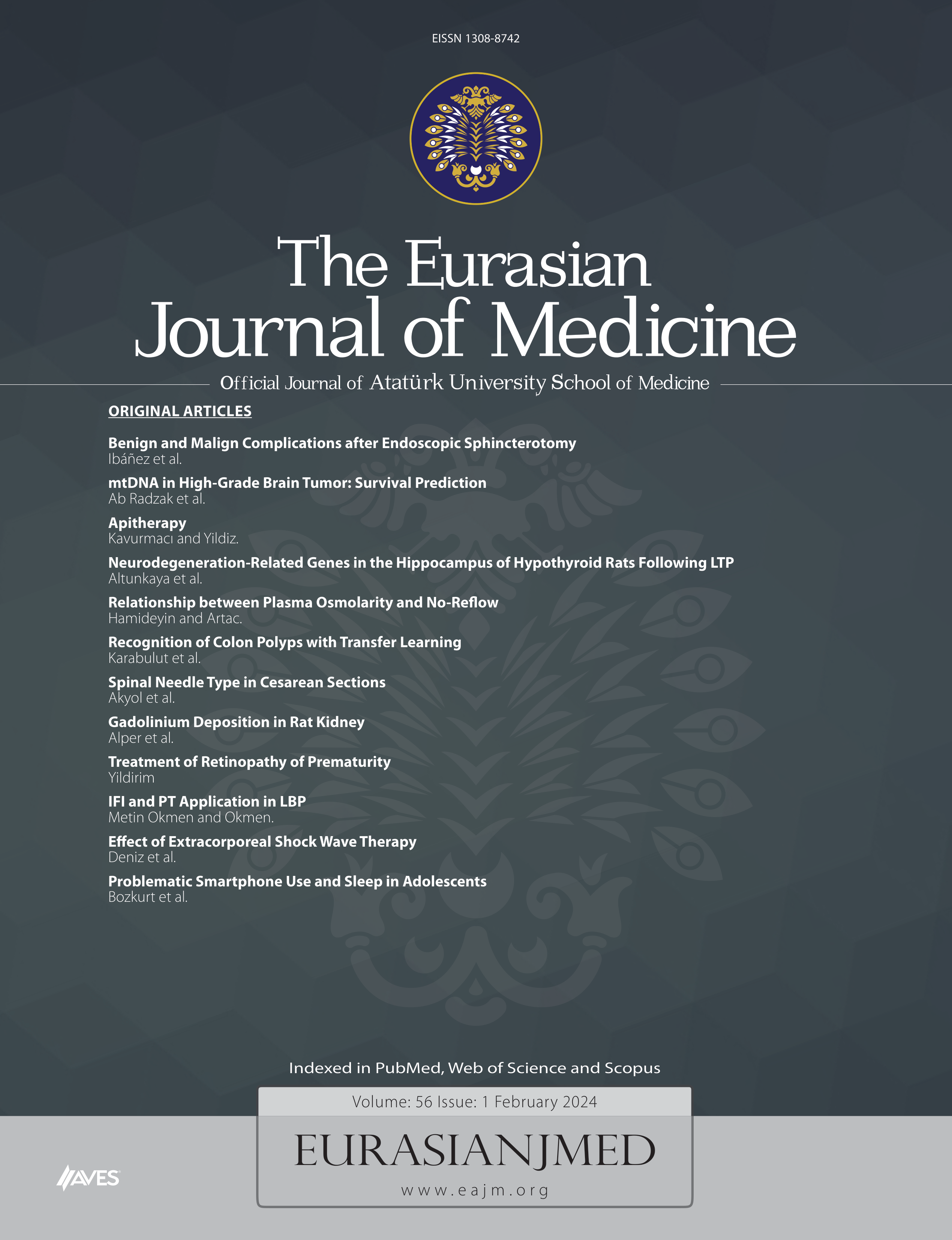Objective: The purpose of the present study was to determine the effect of abdominal binder usage on mobilization, postoperative pain, and distress after cesarean delivery.
Materials and Methods: This prospective randomized controlled study was conducted between September 1, 2017 and January 31, 2018 at Bakirkoy Dr. Sadi Konuk Education and Research Hospital, Istanbul, Turkey. A total of 89 women undergoing elective cesarean were randomized to the study (binder, n=45) or control (no binder, n=44) groups. Patients in the study group were fitted with a binder before leaving the operating room. Mobilization (6-minute walk test), postoperative pain (measured by Short-Form McGill Pain Questionnaire and Visual Analog Scale), and perceived distress status of both groups were evaluated within 8th (first mobilization time), 24th, and 48th h of surgery.
Results: We found that the binder group (BG) walked longer than the control group during the 6-minute walking distance test. At the first mobilization time (postoperative 8th h), the BG (99.4±27.3 m) covered significantly more distance than the control group (81.0±22.2 m) (p=0.001) in the walking distance test. At postoperative 24th h, the McGill pain score in the BG was significantly lower than that in the control group (p=0.004). For all three test times, the Symptom Distress Scale of the BG was lower than that of the control group (postoperative 8th h p=0.024, 24th h p<0.001, and 48th h p<0.001).
Conclusion: The evidence is consistent with abdominal binder usage after cesarean section decreasing the feeling of distress and increasing mobility.
Cite this article as: Karaca I, Ozturk M, Alay I, et al. Influence of Abdominal Binder Usage after Cesarean Delivery on Postoperative Mobilization, Pain, and Distress: A Randomized Controlled Trial. Eurasian J Med 2019; 51(3): 214-8.

.png)

.png)
.png)